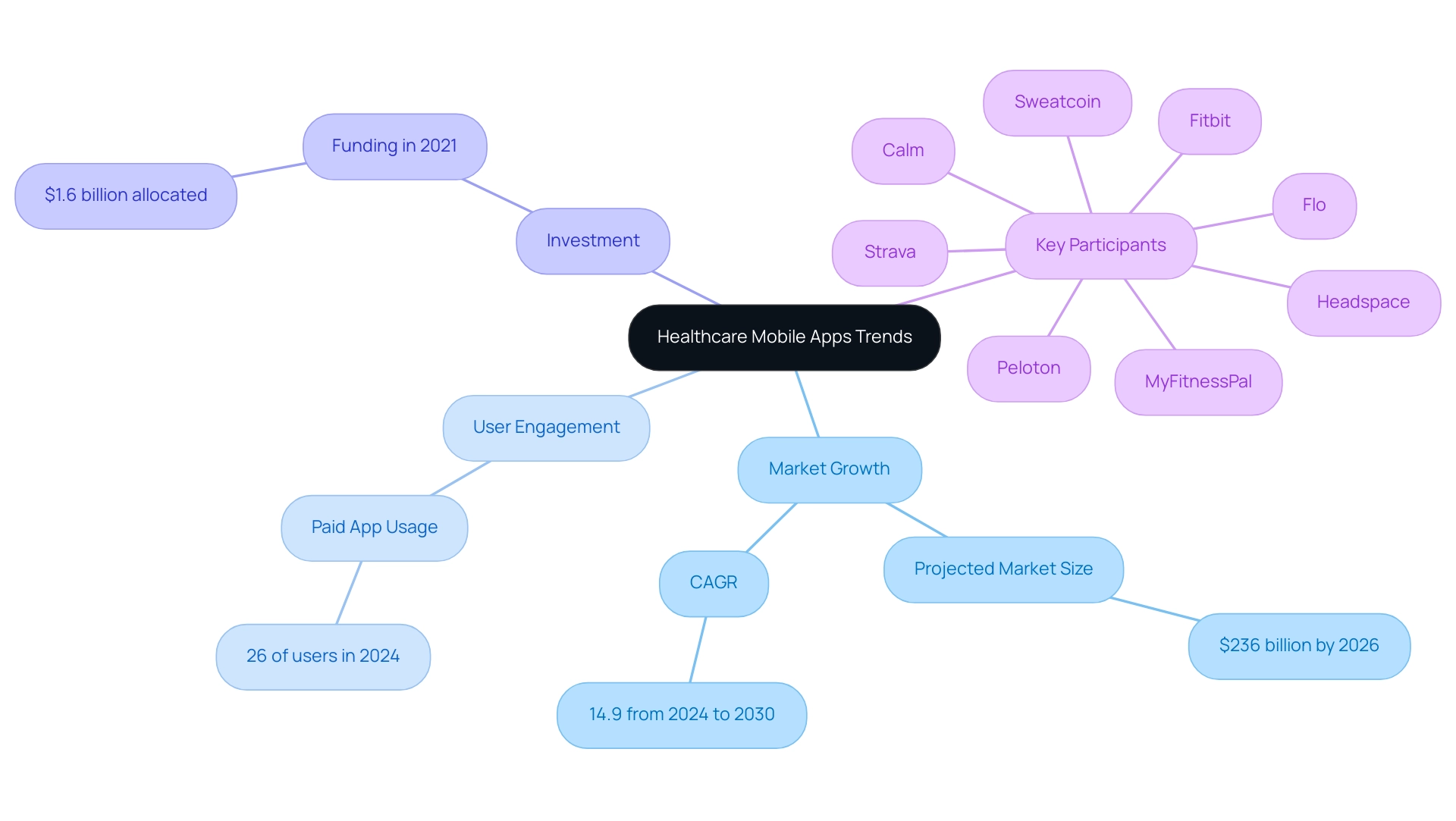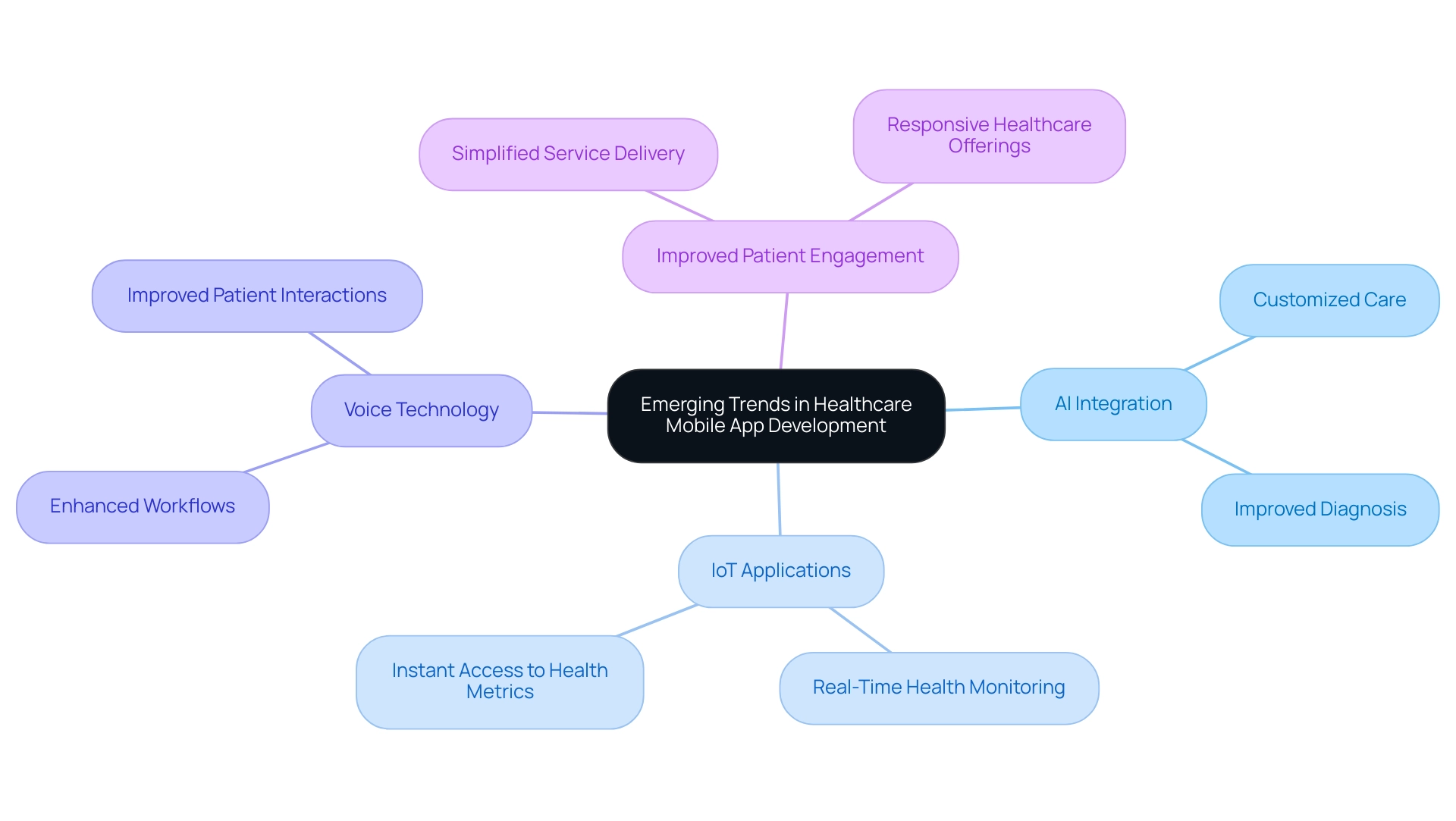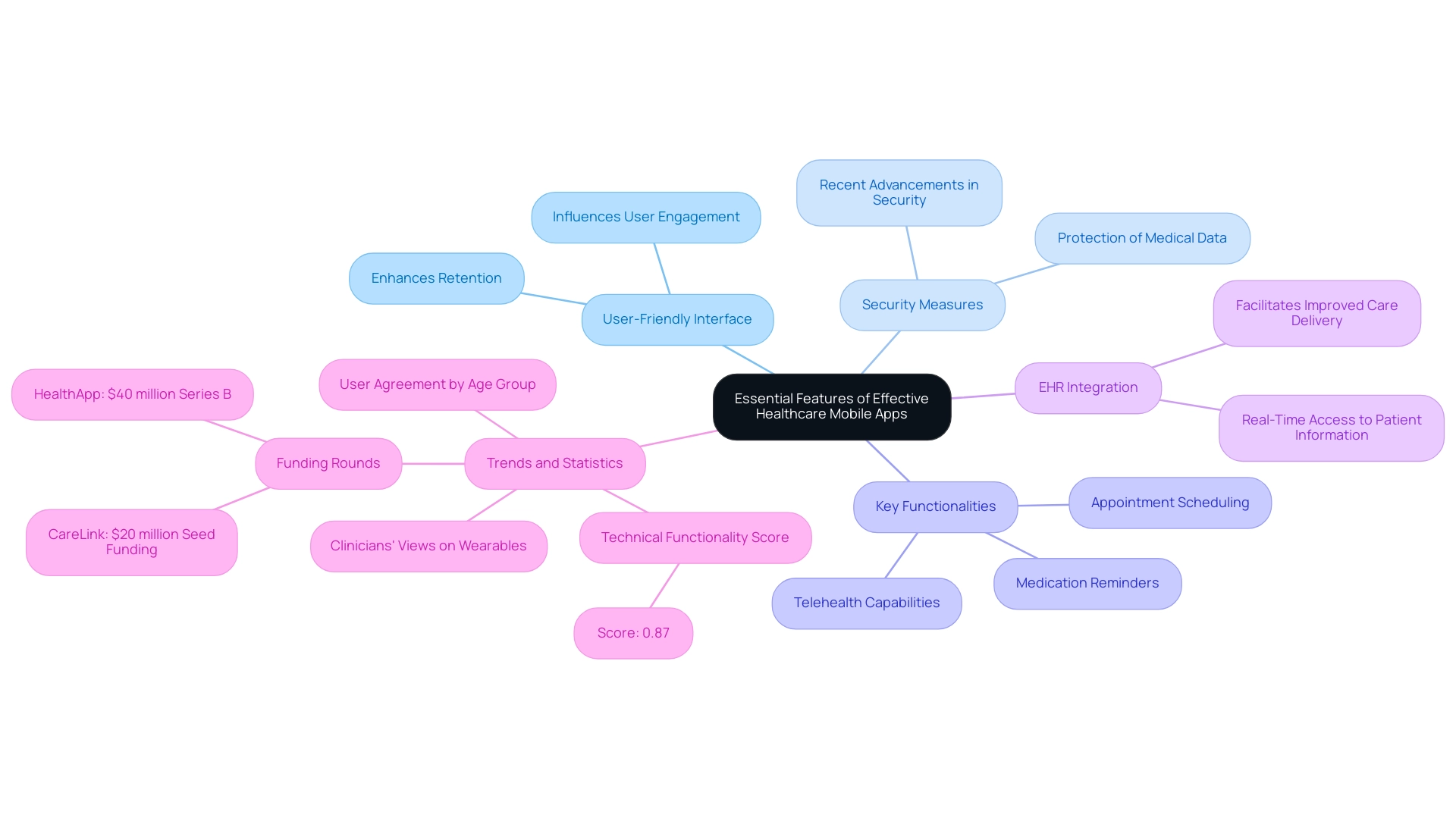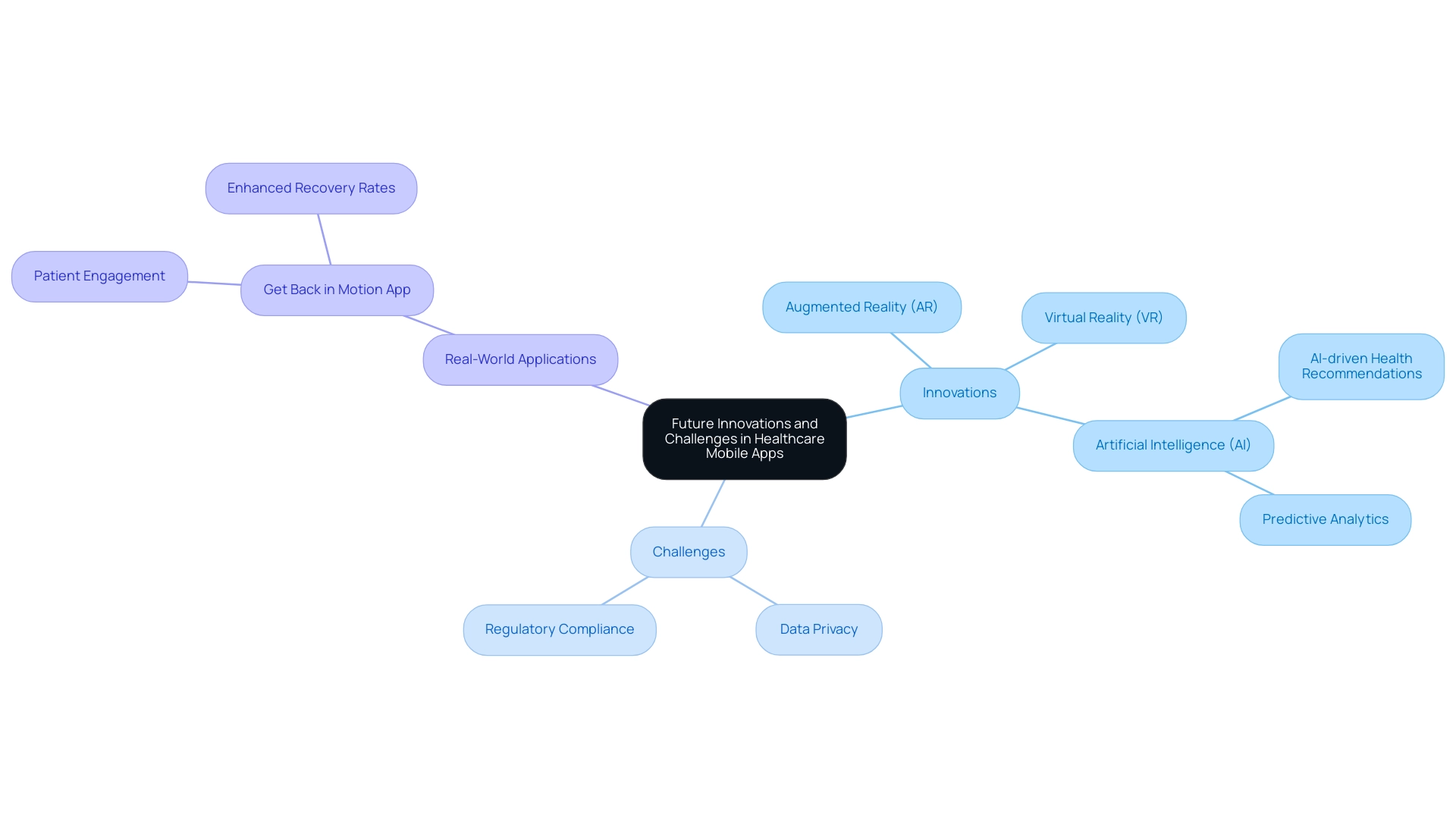Introduction
In the rapidly evolving landscape of healthcare, mobile applications are emerging as pivotal tools that bridge the gap between patients and providers. With projections estimating the market's growth to a staggering $236 billion by 2026, the demand for innovative digital health solutions has never been more pronounced. As chronic diseases rise and telemedicine becomes a standard practice, the integration of advanced technologies such as Artificial Intelligence and the Internet of Things is transforming patient care and operational efficiency. This article delves into the current trends, essential features, and future innovations in healthcare mobile app development, offering insights into how these digital tools are reshaping the healthcare experience and addressing the pressing challenges of today’s health ecosystem.
The Current Landscape of Healthcare Mobile Apps
The healthcare mobile apps trends show that the medical mobile app market has experienced remarkable growth, with projections indicating it will reach $236 billion by 2026, reflecting a compound annual growth rate (CAGR) of 14.9% from 2024 to 2030. This surge in healthcare mobile apps trends is primarily driven by the increasing demand for accessible medical services, particularly in light of the rising prevalence of chronic illnesses and the urgent need for remote monitoring of individuals. The shift towards personalized medical solutions has further accelerated the healthcare mobile apps trends.
Healthcare mobile apps trends show that mobile applications have become indispensable tools for healthcare providers, significantly enhancing patient engagement and streamlining operational workflows. In 2024, 26% of users reported using paid wellness applications, demonstrating significant market penetration and user engagement. Moreover, significant funding of $1.6 billion was designated to mHealth applications in the first half of 2021, which underscores the healthcare mobile apps trends and the increasing investment in digital wellness technologies.
Key participants in this evolving market, such as Fitbit, Strava, Calm, and MyFitnessPal, are redefining patient-provider interactions in line with healthcare mobile apps trends, while medication management solutions offer innovative methods to enhance service delivery. According to Bhushan Pawar, Assistant Manager in Healthcare,
Furthermore, in 2021, the adoption rate of mHealth apps rapidly increased as investments in these digital tools were growing.
This highlights the crucial function that healthcare mobile apps trends serve in modern medical systems.

Emerging Trends in Healthcare Mobile App Development
The development of medical mobile apps is being reshaped by several pivotal healthcare mobile apps trends in 2024. A significant advancement is the integration of Artificial Intelligence (AI), which is radically transforming diagnosis and treatment methodologies, thus enabling customized care. Statistics reveal a notable rise in the adoption of AI technologies in medical applications, with platforms such as Apple Health and Google Fit offering instant health updates that enhance decision-making processes and improve outcomes for individuals.
Furthermore, the Internet of Things (IoT) is playing a crucial role in enhancing remote health monitoring. For example, voice technology improves convenience in medical settings by enabling individuals and professionals to engage with applications via voice commands, enhancing workflows and interactions. IoT devices enable real-time monitoring of individual health metrics, offering medical professionals with instant access to crucial information.
The surge in healthcare mobile apps trends has significantly improved access to medical services, especially considering the ongoing effects of the COVID-19 pandemic. As Jayanti Katariya, CEO of Moon Technolabs, observed,
The incorporation of technology in medical services is not merely a trend; it’s essential for enhancing care for individuals and operational efficiency.
These developments not only improve patient engagement but also simplify service delivery, ensuring that offerings are more effective and responsive to the evolving needs of patients.
As we progress, the integration of AI and IoT, along with developments in VoIP and software solutions, is anticipated to propel additional innovations in healthcare mobile apps trends for health management.

Essential Features of Effective Healthcare Mobile Apps
To create effective healthcare mobile apps trends, developers must prioritize several essential features that not only enhance user satisfaction but also ensure compliance with regulations. A user-friendly interface ranks high among these features, as it directly influences user engagement and retention. Strong security measures are equally essential; considering the sensitive nature of medical data, ensuring its protection is paramount.
This is emphasized by recent advancements in medical application security measures, which underscore the sector's dedication to protecting user information.
Key functionalities that align with healthcare mobile apps trends should also include features that actively promote user engagement, such as:
- Appointment scheduling
- Medication reminders
- Telehealth capabilities
Integration with electronic medical records (EHR) systems is another vital aspect, as it enables healthcare professionals to access patient information in real-time, facilitating improved care delivery. In a 2022 evaluation of app use cases in the UK, varying levels of agreement were found among different age groups, emphasizing the need for tailored app features that resonate with diverse user demographics.
The importance of technical functionality is further highlighted by the statistic that Technical functionality 3 has a score of 0.87, indicating the necessity for robust app features. The terrain of cellular wellness technology is further demonstrated by the funding rounds for firms like Health App, which secured $40 million in Series B financing to enhance its platform, and CareLink, which received $20 million in seed funding for user acquisition and AI development. These examples illustrate strong investor interest in healthcare mobile apps trends, which reflects the potential for significant growth in user engagement and satisfaction.
Furthermore, clinicians' views on employing wearables for preferential treatment by 2031 emphasize the changing environment of medical technology and its effects on health applications.
As John Scherer remarked,
Finally, we wish to recognize David Vinson, Corey Ackerman, Adam Hurwitz, and John Scherer for their guidance and ongoing support in advancing the health industry and promoting the role of technology in the future of health.
By concentrating on these crucial attributes, developers can create medical applications that not only fulfill user requirements but also enhance operations for service providers, positioning themselves for achievement in 2024 and beyond.

Future Innovations and Challenges in Healthcare Mobile Apps
The healthcare landscape is poised for significant transformation, especially regarding healthcare mobile apps trends. Innovations like augmented reality (AR) and virtual reality (VR) are poised to transform training and client education, providing immersive experiences that boost user engagement. However, as highlighted by recent trends, developers face considerable obstacles, notably data privacy concerns and the complexities of regulatory compliance.
With CareLink securing $20 million in seed funding to bolster user acquisition and invest in AI-driven health recommendations, which aims for a targeted 50% increase in monthly active users, the industry is clearly moving towards leveraging advanced technologies while maintaining a focus on safety. As noted by Reuters, there is a significant emphasis on AI, further underscoring its importance in shaping future innovations. Furthermore, statistics indicate that developers must prioritize interoperability among diverse medical systems to ensure seamless integration and functionality.
Real-world applications, such as the 'Get Back in Motion' app, exemplify how tailored support can enhance user engagement and recovery rates. This app not only showcases the successful balance between innovation and adherence to strict medical regulations but also highlights how personalized tools can enhance the rehabilitation process. As we advance into 2024, the future of healthcare mobile apps trends will hinge on the ability to navigate these challenges while delivering solutions that prioritize both patient care and data security.

Conclusion
The healthcare mobile app market is on an impressive trajectory, anticipated to reach $236 billion by 2026. This growth is fueled by an increasing demand for accessible healthcare and a shift towards personalized solutions, making mobile applications vital for enhancing patient engagement and operational efficiency. As chronic diseases rise and telemedicine becomes mainstream, the integration of technologies like Artificial Intelligence and the Internet of Things is pivotal in transforming patient care and streamlining healthcare workflows.
Emerging trends, such as AI integration and the rise of IoT, are reshaping how healthcare providers interact with patients. The ability to leverage real-time data and improve decision-making processes is essential for better patient outcomes. Moreover, the surge in telemedicine applications has made healthcare more accessible, particularly in the wake of the COVID-19 pandemic, underscoring the necessity of technology in modern healthcare systems.
To ensure the success of these applications, developers must focus on essential features that enhance user experience while adhering to regulatory standards:
- A user-friendly interface
- Robust security measures
- Functionalities that foster patient engagement
The commitment to safeguarding sensitive health data and ensuring seamless integration with existing healthcare systems will be paramount as the industry evolves.
Looking ahead, the future of healthcare mobile apps will be defined by innovation and the ability to address challenges such as data privacy and compliance. With advancements like augmented reality and artificial intelligence on the horizon, the potential for improved patient care is substantial. By navigating these complexities and emphasizing interoperability, healthcare mobile applications can continue to reshape the healthcare landscape, ultimately leading to a more effective and patient-centered system.





